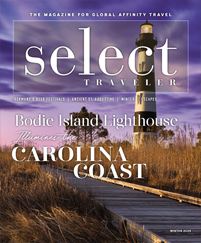What exactly do you see during a trip focused on American history?
In some parts of the country, it’s Spanish missions. Elsewhere, it’s pilgrims and Native Americans.
In the Northeast, you have more opportunities to explore America’s history than anywhere else. Everywhere you turn, there is a historic trail, a heritage house, a battle site or a memorial.
Travel back in time 200 to 300 years with costumed interpreters, or take in America’s modern history, from the glamour of the Golden Age to the glory and heartbreak of World War II fighters, in the Northeast’s living-history museums.
Strawbery Banke Museum
Portsmouth, New Hampshire
Concerned citizens saved the historic homes of Strawbery Banke, which represent 375 years of American history on 10 acres in the middle of downtown Portsmouth, from the wrecking ball in the 1960s.
Originally settled by the British in 1630, the community’s 42 restored houses each relate a different chapter of the area’s history. In the 1919 Shapiro House, a costumed interpreter cooks over a woodstove using items from her garden. While in the 1834 Cotton Tenant house, visitors can weave on a foot-powered loom.
“We open 14 to 15 houses every day,” said John Forti, curator of historic landscapes. “We start with orientation; then, everyone explores on their own. We can also set up specialty tours focused on architecture, the gardens or archaeology.”
Due to space constraints, indoor tours can accommodate only 20 people, but the newly opened cafe can seat an entire group together for lunch.
www.strawberybanke.org
Old Sturbridge Village
Sturbridge, Massachusetts
The Northeast’s largest outdoor history museum re-creates village life exactly as it was in the 1830s, from homes to shops and public buildings, on more than 200 scenic acres.
“Plan on at least three hours to see the village; but some folks spend multiple days here,” said Greg Dixon, vice president of marketing and communications. “The common area, with must-sees like the meeting house, bank and period houses, and the farm and mill are the key places to visit.”
Blacksmiths, tinsmiths and potters demonstrate the specialties required in the preindustrial age.
“The interpreters are really the highlight,” said Dixon. “They’re historians, so they’ll answer questions out of character to help you really understand what is going on.”
A stagecoach seating up to nine and a “carry-all” with space for 30 to 35 move groups around the site. Groups can choose to dine in the on-site tavern or cafe or take a custom cooking class to create their own historic lunches.
www.osv.org
Newport Mansions
Newport, Rhode Island
Centered around the Breakers, the summer home of the Vanderbilt family that was inspired by Italy’s Renaissance palaces, the 11 Newport Mansions allow visitors to peek into more than 250 years of our nation’s leading families’ histories.
Touring each home with a guide or by audio tour — the type of tour depends on the house — takes around an hour and a half.
“Probably 70 percent of groups visit one house — typically the Breakers — and most of the rest visit two houses,” said tourism marketing manager Barbara Shea.
The Elms features a servant life tour focused on what it was like to be on staff for America’s leading families of the time. Beginning in the basement boiler room and wine cellar, the tour winds up to the staff quarters and ends on the rooftop terrace, with sweeping views of the bay.
“It’s really exciting to combine the servant life tour with the regular audio tour, so you get both sides,” said Shea. “It’s our own ‘Downton Abbey.’ You get a view of the family and their entertaining, and the lives behind that.”
www.newportmansions.org
Air Mobility
Command Museum
Dover, Delaware
Formerly a secret rocket research center and now a nationally registered historic place, the Air Mobility Command Museum is the only museum of its kind in the United States.
“For a training project, the reserves restored a World War II bomber, and the commander said, ‘I don’t want to put an airplane on a stick at the front gate. What would it take to start a museum?’ and the museum grew from there,” said director Mike Leister.
An average tour runs for an hour and a half, beginning in the main hangar with the eight most historically significant and fragile aircraft. Outside, the staff opens at least two aircraft for visitors to explore, typically Air Force Two, the vice president’s plane, and the CS, the largest airplane in any museum in the world.
Groups can lunch in the canteen, which seats 24, or outside if weather permits, or head straight to the Air Force-grade flight simulators.
www.amcmuseum.org.









